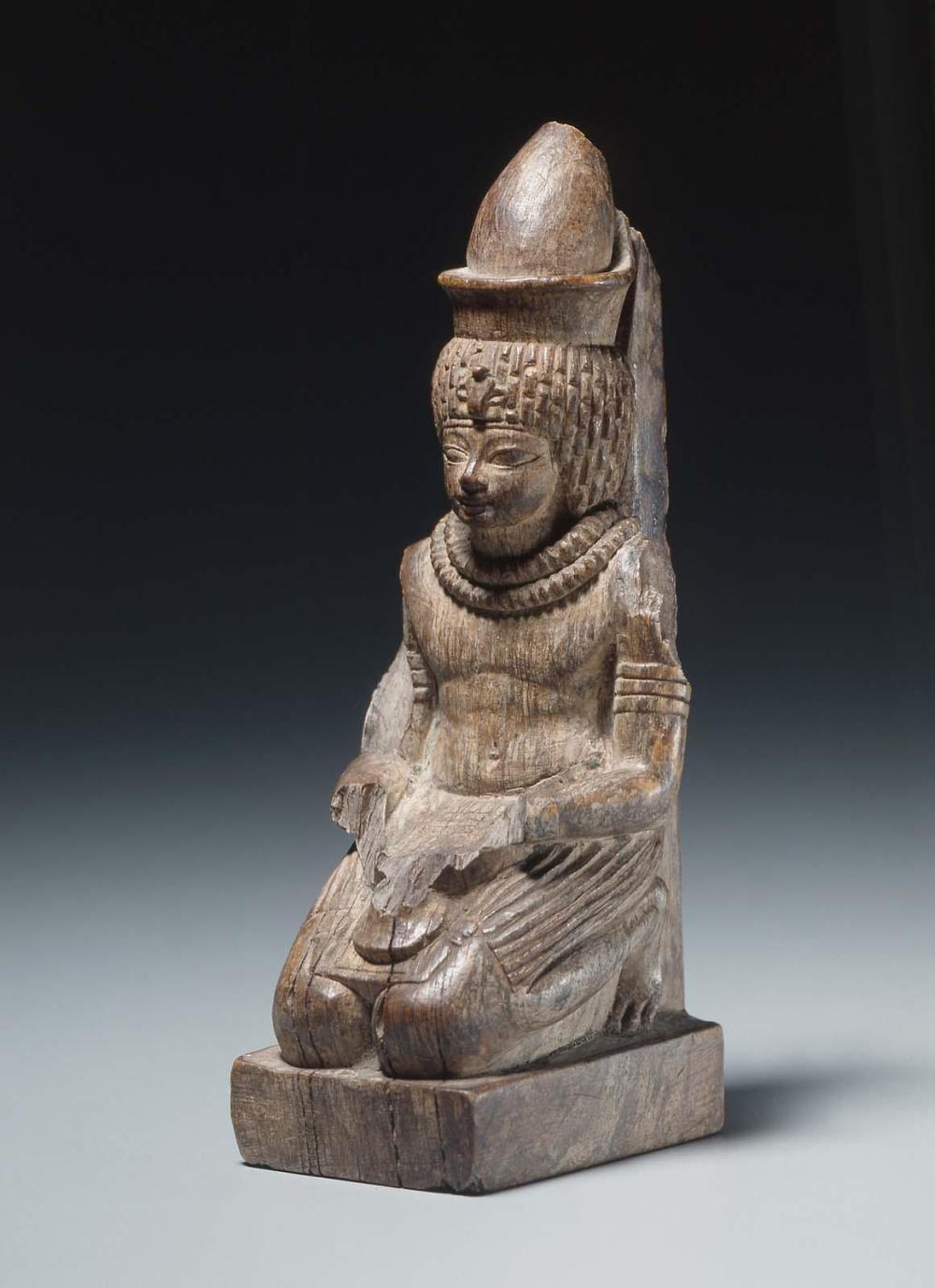Advanced Search
Kneeling Amenhotep III as the god Neferhotep
Egyptian
New Kingdom, Dynasty 18, reign of Amenhotep III
1390–1352 B.C.
Medium/Technique
Glazed steatite
Dimensions
Height x width x depth: 13 x 3.8 x 5.3 cm (5 1/8 x 1 1/2 x 2 1/16 in.)
Credit Line
Gift of Mrs. Horace L. Mayer
Accession Number1970.636
CollectionsAncient Egypt, Nubia and the Near East
ClassificationsSculpture
DescriptionThere is more to this charming statuette of Amenhotep III than meets the eye. The king is wide-eyed, innocent-looking, and decidedly chubby, his bare chest revealing his baby fat. But despite his youthful appearance, Amenhotep III was no child when this statue was created, for it is one of a number of closely related statuettes made in celebration of the king's thirty-year jubilee. Thirty years symbolized a generation, and during the celebration of the jubilee, the king was born again. Amenhotep III would have been at least in his forties at the time, but he appears as a child in token of his spiritual rebirth. The inscription on the back of the statuette calls Amenhotep III, "the son of Isis, who dwells in Edfu," so presumably the figure was placed in the temple of Edfu as an offering to Isis. True to his name, the king kneels to present an offering, now lost, to his mother.
The statuette's distinctive headdress - a round curly wig with uraeus, surmounted by the Double Crown of Upper and Lower Egypt - identifies the ruler with the child god Neferhotep. The crowns were meant to confer stability, while implicit in any child god is the prospect of a new beginning full of promise. The statuette is thus a visual pun, and even the color added to its symbolism. Originally, the figure was glazed a lustrous blue-green, now almost entirely worn away. In ancient Egypt as today, to be green meant to be young; in ancient Egyptian, the words for "green" and "to be young," renput and renpy, had the same root. Additional meaning is provided by the word for glazed material, tjehenet, "dazzling, luminous," which was also applied to sunlight, and by extension, to gold. In this image of himself as the child god Neferhotep, Amenhotep III - who liked to call himself the "dazzling sun-disk of all lands" - found the perfect form of self-expression.
The statuette's distinctive headdress - a round curly wig with uraeus, surmounted by the Double Crown of Upper and Lower Egypt - identifies the ruler with the child god Neferhotep. The crowns were meant to confer stability, while implicit in any child god is the prospect of a new beginning full of promise. The statuette is thus a visual pun, and even the color added to its symbolism. Originally, the figure was glazed a lustrous blue-green, now almost entirely worn away. In ancient Egypt as today, to be green meant to be young; in ancient Egyptian, the words for "green" and "to be young," renput and renpy, had the same root. Additional meaning is provided by the word for glazed material, tjehenet, "dazzling, luminous," which was also applied to sunlight, and by extension, to gold. In this image of himself as the child god Neferhotep, Amenhotep III - who liked to call himself the "dazzling sun-disk of all lands" - found the perfect form of self-expression.
ProvenanceBy 1965: E. Filmer, Esq. collection; 1965: purchased by Horace L. Mayer from Sotheby & Co., London, lot 144B, November 29, 1965; 1966: lent to the MFA by Horace L. Mayer, June 14, 1966; 1968: to Mrs. Horace L. Mayer; 1971: year-end gift of Mrs. Horace L. Mayer to the MFA. (Accession date: January 13, 1971)






